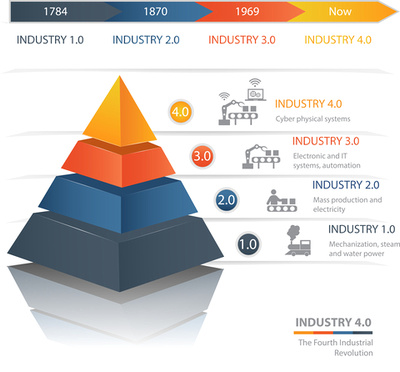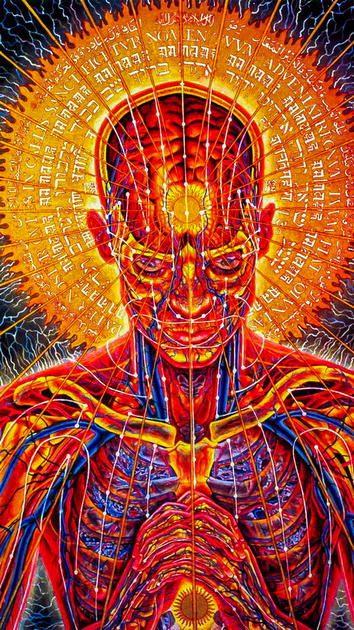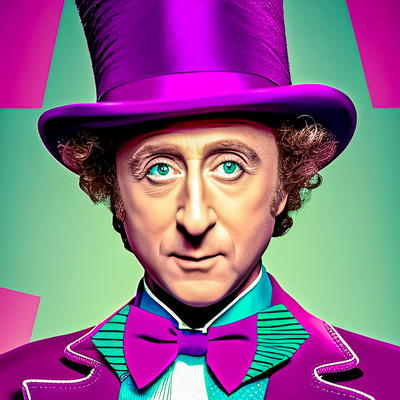"Photos, Paint, & A.I. Mayhem"
INDUSTRIAL REVOLUTION MIRRORS A.I.'S FUTURE:
Since humankind's birth, we've shown a remarkable knack for inventing and adapting. From the most straightforward farming techniques to the weaving of complex societies, our species has continuously sought to shape our surroundings and bend nature to our whims. But now, as we teeter on the edge of a new age, marked by the swift rise of artificial intelligence and ever more clever machines, it's vital to remember that this isn't the first time we've faced changes so immense they threaten to shake our very foundations. Instead, the ascent of A.I. and the wonders it creates can be seen as a natural progression from the earth-shattering shifts that transpired during the Industrial Revolution - an event that began in the 18th century and turned the world on its head, sometimes in ways that sent shivers down our spines.
The Industrial Revolution, marked by a metamorphosis from farming-based economies to the machine-driven societies we now

 know, set the stage for today's world. However, this monumental shift also conjured fear, uncertainty, and dread. As machines started to replace human toil in industries such as textiles and farming, many folks trembled at the prospect of losing their jobs and the communities they held dear. The notorious Luddite movement sprang forth from these anxieties, with bands of skilled craftsmen rising against the mechanization that threatened their trades and, indeed, their way of life.
know, set the stage for today's world. However, this monumental shift also conjured fear, uncertainty, and dread. As machines started to replace human toil in industries such as textiles and farming, many folks trembled at the prospect of losing their jobs and the communities they held dear. The notorious Luddite movement sprang forth from these anxieties, with bands of skilled craftsmen rising against the mechanization that threatened their trades and, indeed, their way of life.
The similarities between the Industrial Revolution and our current age of artificial intelligence are striking. Now, just as then, we grapple with the implications of A.I. and the effects it may have on our lives. Much like the pioneering machines of the Industrial Revolution, A.I. technologies promise to transform industries, spur productivity, and unveil possibilities we'd never before dared to dream of. Yet the fear of job loss, the decline of human skills, and the moral quandaries that intelligent machines pose echo the worries of those who lived through the earliest days of industrialization.
As we strive to chart a course through the unexplored territory of A.I. and its consequences for our society, we must look to history for guidance. The Industrial Revolution, though peppered with challenges and trials, ultimately led to a more prosperous and interconnected world, thanks in large part to the resilience and adaptability of us humans. The key to harnessing the potential of A.I., just as with the machines of the Industrial Revolution, lies in our ability to balance the rewards and risks, address the genuine fears and concerns that emerge, and ensure that these game-changing innovations serve the greater good.
As connoisseurs of the history of artificial intelligence and the Industrial Revolution, we appreciate that humanity has faced similar crossroads. Thus, we must approach this uncharted terrain with wisdom and foresight. By embracing change and confronting its challenges head-on, we can forge a future where A.I. and other advanced technologies empower us to build a better world, just as the trailblazers of the Industrial Revolution did in their time.
A.I., A NEW MEDIUM IN ART:
The lightning-fast leaps in artificial intelligence haven't just shaken industries and societies and sparked a new epoch of imaginative expression, turning the realms of art and photography on their heads. As connoisseurs of artificial intelligence history

 and the fields of art and photography, we're witnessing the birth of a novel medium that tests the limits of artistic creation, blurs the borders between disciplines, and challenges our assumptions about what constitutes art.
and the fields of art and photography, we're witnessing the birth of a novel medium that tests the limits of artistic creation, blurs the borders between disciplines, and challenges our assumptions about what constitutes art.
Artificial intelligence has created an entirely new art genre, often dubbed AI-generated art or computational creativity. Machine learning algorithms and neural networks craft original and visually delightful works. These groundbreaking methods empower established artists and photographers to dabble in new styles, forms, and techniques and open the door to the creative process, granting those without formal artistic training the opportunity to express themselves in innovative and significant ways.
For example, celebrated writers can tap into A.I.'s prowess to become extraordinary artists, using their familiarity with narratives, symbols, and metaphors to inspire unique visual creations that defy traditional artistic confines. Furthermore, by joining forces with A.I., writers can infuse their works with a visual richness that supplements and elevates their literary skill, seamlessly merging the realms of literature and visual art in unprecedented ways.
Likewise, veteran photographers and artists can supplement their existing knowledge of art styles, composition, and technical aspects, such as the rule of thirds, with the capabilities offered by artificial intelligence. By harnessing AI-based tools and techniques, these creators can push the boundaries of their craft, generating striking images that defy conventional aesthetic norms and introduce fresh perspectives to art and photography.
What's more, the union of A.I. and art holds the potential to produce synergies that can lift the work of both budding and established artists. For example, the immense knowledge of art history and styles ingrained within A.I. algorithms can inspire artists to experiment with new visual languages, drawing on a rich legacy of artistic movements and techniques while infusing their work with a distinctly modern sensibility.
In this brave, new world of AI-generated art, the possibilities are bounded only by the creators' imagination, who can now access various tools and resources to articulate their unique visions. The merging of human creativity and artificial intelligence has revealed a landscape of unexplored artistic territory, urging artists and photographers to continually evolve, adapt, and stretch the limits of their craft.
As experts in the history of artificial intelligence and the spheres of art and photography, this new medium holds enormous promise for the future of creative expression. By embracing the potential of A.I., artists, and photographers can harness the power of cutting-edge technology to produce groundbreaking works and engage in a captivating dialogue with the artistic traditions of the past, forging a new path forward for the world of art.
A FINAL THOUGHT ON A.I. VERSUS HUMANITY:
We've delved into the similarities between the fears and uncertainties accompanying the Industrial Revolution and the trepidations encircling A.I.'s impact on our world today. In reflecting upon these transformative epochs in history, we find ourselves drawn to the words of the enigmatic Willy Wonka, brought to life by the inimitable Gene Wilder, who once declared, "We are the music makers.

 We are the dreamers of dreams." These words serve as a poignant reminder of the immense potential within human creativity and our capacity to sculpt the world around us.
We are the dreamers of dreams." These words serve as a poignant reminder of the immense potential within human creativity and our capacity to sculpt the world around us.
As we teeter on the brink of a new era characterized by rapid advancements in artificial intelligence, we must ask ourselves whether we can harness A.I. as a tool to make music finer and dreams more vibrant. Can we employ this formidable technology to augment our creative capacities and reveal new horizons of possibility? This question, so eloquently posed by Wonka, is central to our collective voyage into the future.
As we wrestle with these uncertainties, another Wonka quote springs to mind: "Oh, you should never, never, doubt what nobody is sure about." This sage counsel reminds us that we must approach the future with humility and an openness to exploration and discovery. Humanity may indeed find itself aboard Wonka's boat, with A.I. evolving at a pace that is both exhilarating and, at times, frightening. As we chart these uncharted waters, we must acknowledge the inherent unpredictability of our course, much like the famous boat scene where Wonka exclaims, "There's no earthly way of knowing which direction we are going... ARE THE FIRES OF HELL A GLOWING, IS THE GRISLY REAPER MOWING? YES, THE DANGER MUST BE GROWING!"
Amid this uncertainty, we must remain unswerving in our pursuit of knowledge and our commitment to ethical and responsible innovation. We must ensure that our dreams don't degenerate into nightmares but serve as beacons of hope and inspiration, guiding us toward a brighter future for all.
In conclusion, the history of artificial intelligence and its parallels with the Industrial Revolution reminds us that we've faced transformative changes and emerged more robust and resilient. As we embrace the potential of A.I., we must take to heart the wisdom of Willy Wonka and approach the future with a spirit of curiosity, humility, and unwavering commitment to ethical innovation. By doing so, we can remain the dreamers of dreams and the music makers, using A.I. as a potent tool to create a better world for future generations.
Thanks for Stopping. Bye,
Randy
